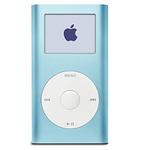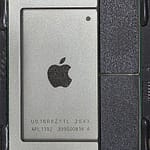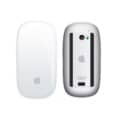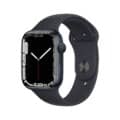- All Apple Devices
- iPod
- Apple iPod Mini 1st Generation
Apple iPod Mini 1st Generation
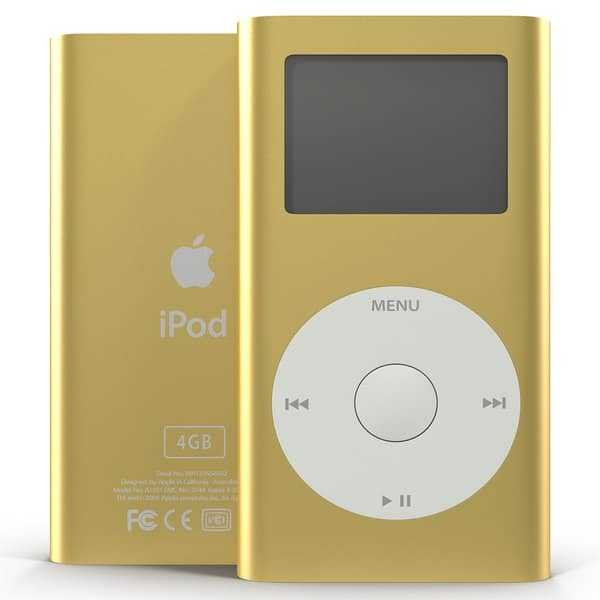

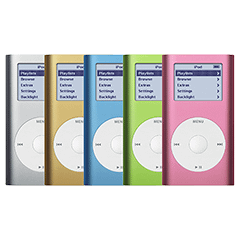
iPod Mini 1st Generation

Product Brand: Apple
3
Pros
- Price dropped on 4GB model
- Compact and lightweight design, easy to carry around
- Large storage capacity for its time (4GB or 6GB)
- Easy to use interface and intuitive controls
- Long battery life, up to 8 hours of playback
- Available in a range of colours to suit different preferences
- Durable construction with an aluminium body
Cons
- No color screen or video playback, limited to audio files only
- Limited file format support, only compatible with MP3, AAC, and WAV
- No wireless connectivity, must transfer files through a computer
- No built-in speaker, must use headphones or external speakers for playback
- No built-in FM radio or voice recording features
- Discontinued by Apple and no longer supported
Apple iPod Mini 1st Generation Review and Features
The iPod Mini is a discontinued, smaller digital audio player designed and marketed by Apple Inc. While it was sold, it was the midrange model in Apple’s iPod product line. It was announced on January 6, 2004, and released on February 20, 2004.
A second-generation version was announced on February 23, 2005, and released immediately. While it was in production, it was one of the most popular electronic products on the market, with consumers often unable to find a retailer with the product in stock.
After one year of being made, the iPod Mini was discontinued on September 7, 2005, and was replaced by the iPod Nano.
The iPod Mini used the touch-sensitive scroll wheel of the third-generation iPod. However, instead of the four touch buttons above the wheel, the buttons were redesigned as mechanical switches beneath the wheel itself—hence the click wheel.
To use one of the four buttons, the user physically pushes the edge of the wheel inward over one of the four labels. Like its predecessors, the wheel was developed for Apple by Synaptics.
The click wheel was also used in the fourth, fifth and sixth generation iPods and the iPod Nano, from the first generation through the fifth; however, in the Nano and 5G iPods onwards, the click wheel used was developed by Apple.
Above the wheel was a monochrome 138×110 LCD that displayed a menu or information about the selected track. Newer-generation iPods have since adopted colour displays.
Full Technical Specifications
General Technical Specifications
| Device Type | Portable Media Player |
| Models |
M9160LL/A (silver) M9437LL/A (gold) M9436LL/A (blue) M9435LL/A (pink) M9434LL/A (green) |
| Announced | 06 January, 2004 |
| Released | 20 February, 2004 |
| Status | Discontinued |
| Successor | iPod Nano |
| Generation | 1st |
| Colors | Silver, Gold, Pink, Green, Blue. |
| System Requirements |
Mac: 10.1.5 or later Windows: 2000 iTunes 4.6 or later |
| Customizable Settings |
Customize main menu Create On-The-Go playlists Rate songs Shuffle songs or albums Repeat one or all Sound Check on or off 20 Equalizer settings Backlight timer Display contrast Alarms on, off or silent Sleep timer Date and time Display time in menu bar Contacts sort and display by first or last names Clicker on or off Languages: English, French, German, Japanese, Spanish, Italian, Dutch, Danish, Norwegian, Finnish, Swedish, Korean, Simplified Chinese, Traditional Chinese |
| Power Adapter |
6-pin FireWire connector AC input: 100V to 240V at 0.4 amp maximum Frequency: 50Hz to 60Hz DC output: 12V at 1 amp maximum |
| Input and Output |
Dock connector 3.5-mm stereo headphone jack Wired remote connector |
| iPod's Processor Type | ARM 7TDMI PP5020 |
| iPod's Processor Speed | 80 MHz (x2) |
| RAM | 32 MB |
| iPod's Internal Memory |
4GB hard disk drive Holds 1,000 songs in 128-Kbps AAC format Stores data via FireWire or USB 2.0 hard drive |
| Connectivity | USB 2.0, FireWire, Dock connector, Remote connector |
| Audio Technology Features |
Up to 25 minutes of skip protection Frequency response: 20 Hz to 20,000 Hz Audio formats supported: AAC (16 to 320 Kbps), MP3 (32 to 320 Kbps), MP3 VBR, Audible, AIFF (Mac only) and WAV Headphones Earbud-style headphones with 18-mm drivers using Neodymium transducer magnets Frequency response: 20Hz to 20,000Hz Impedance: 32 ohms |
| Headphone Type | 3.5mm Audio jack |
| Display Info |
1.67 inch (diagonal) liquid crystal display with blue-white LED backlight 138-by-110-pixel resolution, 0.22-mm dot pitch Support for display of multiple languages and characters simultaneously |
| Dimensions |
Height: 3.6 in Width: 2.0 in Depth: 0.5 in |
| Weight | 3.6 oz (104 g) |
| Camera | No |
| SIM SIM (Subscriber Identity Module) is a small card that contains mobile network subscriber's account information. This allows the phone using the card to attach to a mobile network. The SIM card is most commonly associated with GSM and UMTS mobile networks. Moving a SIM card from one phone to another allows a subscriber to switch mobile phones without having to contact their mobile network carrier. SIM cards can also be used by a phone to store limited amounts of data, such as phone numbers and text messages. | No SIM |
| Battery |
Built-in rechargeable lithium-ion battery Playtime: 8 hours when fully charged Standby time: 1 month when fully charged Charging via FireWire to computer system or power adapter Fast-charge time: 1 hour (charges up to 80% of battery capacity) Full-charge time: 3 hours Charging via USB 2.0 to computer system or power adapter (iPod mini only) Fast-charge time: 1 hour (charges up to 80% of battery capacity) Full-charge time: 3 hours |
| Navigation | Click wheel |
Disclaimer Note
We can not guarantee that the information on this page is 101% correct.


